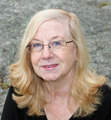Lea Wait's Blog, page 115
March 30, 2021
Knowing a Place
Today, we have a guest post from Detective Jason Allison, NYPD retired. A New Yorker transplanted to New England, he’s writing today about developing a sense of place.
Bronx born and raised, Jason Allison spent two decades with the New York City Police Department. Twelve of those years were as a detective; four as part of a joint Federal Task Force. Primarily the murder police, his investigations took him across the country; from Brooklyn to Miami, Staten Island to Stockton. He retired in 2018 to write full time. In 2020, his short story Anosmia won Honorable Mention for the Al Blanchard award. He has presented to attendees of ThrillerFest and members of the Mystery Writers of America.
“You don’t ever really know a place till you’ve eaten its food.”
Those were a senior NYPD detective’s words to me, as we settled into a booth at a diner in 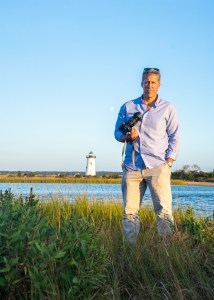 Brighton Beach. I was new to the Detective Bureau, having finally escaped the ditch-digging that is Narcotics work, and he’d advised me to listen more than I spoke. So we sat there, on some weekday afternoon, a few blocks from Brooklyn’s southern shore. Gyros were served, heavy on the tzatziki sauce. A group of old men in a corner spoke emphatic Russian; our waiter tossed jokes to his bus boy in Spanish; two men in shiny suits and no ties discussed something in hushed Yiddish, or maybe Hebrew. I couldn’t tell.
Brighton Beach. I was new to the Detective Bureau, having finally escaped the ditch-digging that is Narcotics work, and he’d advised me to listen more than I spoke. So we sat there, on some weekday afternoon, a few blocks from Brooklyn’s southern shore. Gyros were served, heavy on the tzatziki sauce. A group of old men in a corner spoke emphatic Russian; our waiter tossed jokes to his bus boy in Spanish; two men in shiny suits and no ties discussed something in hushed Yiddish, or maybe Hebrew. I couldn’t tell.
We finished our meal, paid the check, and left. Before climbing into our Squad’s battered Crown Victoria, he looked over at me and said, “Every meal’s a chance to learn somethin’ new.”
I wasn’t sure what he meant, but the junior half of a cop partnership does as he’s told. We practiced his policy with great discipline; meals were quiet affairs, and always took place near a window. Outside and in, New York City unfurled around us; its sights, sounds, and smells.
Over the next twelve years, I saw the wisdom in his words. New York is a city of neighborhoods, enclaves of peoples separated by an avenue, sometimes less. A ride through Queens takes one on a tour of Greece, Columbia, and Jamaica, along with a dozen other places. Each stretch has its own storefronts, restaurants, and—most importantly—energy. Google Maps can’t replicate a place’s feel. Not yet. You can only truly get a handle on a place by being in it. I look back fondly on those times.
I retired in 2018, moved to Massachusetts, and began writing in earnest. I had long written fiction strictly for my own amusement—supervisors hated my lengthy, detailed reports. The more I wrote, the more I realized my words came easier whenever I set my stories in places I’d actually been. The work seemed more authentic, more real than anything a writer of my skills could create from pure imagination. I soon began to see why.
The fiction I respond to most strongly has a powerful sense of place. Tana French’s Dublin; George Pelecanos’s Washington D.C.; Adrian McKinty’s Belfast; Stephen Mack Jones’s Detroit; and, of course, Richard Price’s New York. In hands as skilled as these, cities become characters. There’s a story down every street, if you’re willing to listen.
As a detective, listening was my job. As a writer, listening is my job.
My cases required extensive travel, and I saw both oceans while in the city’s employ. In my writing, I often fall back on those long nights parked on Ocean Drive in South Beach, or mornings watching the sun come up over fields in Onslow County, North Carolina. I write with more confidence about places I’ve been because I’ve chatted with their bartenders, cabbies, bell staff, and cops. Not to mention the countless conversations I’ve overheard. (Side note—I always carried two note pads; one for the case, another to memorialize distinctive characters and bits of potential dialogue. These days I’m down to one.)
I maintain the same open eyes and ears in New England, which, as a New Yorker (and a Jets fan), has occasionally required a thick skin. I’ve learned a little of how Hyannis differs from Kennebunkport, Portland from Portsmouth, Beacon Hill from Jamaica Plains. I’m not so naive as to think I’m a local, not like how I feel about the Bronx and Brooklyn, but I’m getting there.
I read once—I forget where—that setting begets character begets plot. I believe in this wholeheartedly. Since I root my stories in our world, it had better feel authentic. Wherever I go, I lean into the local scene as best I can. I seek out the restaurants, pubs, coffee shops, and have a seat. I order the fish and chips, or maybe a lobster roll, and take in the people around me, because I believe the world, even after having spent two decades investigating its horrors, is endlessly fascinating. If you’re a writer, you probably agree.
And, every now and then, I think back to that diner in Brooklyn, and wonder what those two guys in the suits were talking about.
March 29, 2021
Right Up There With Al, Leslie and Tex
John Clark on an unusual geographic phenomenon, one found only in Maine and Vermont. I’m talking gores which are described thusly. “A gore is an irregular parcel of land, as small as a triangle of median in a street intersection or as large as an unincorporated area the size of a township.”
Wikipedia has this to say about them: “In old English law, a gore was a small, narrow strip of land. In modern land law and surveying a gore is a strip of land, usually triangular in shape, as might be left between surveys that do not close. In some northeastern U.S. states (mainly northern New England), a gore (sometimes a land grant or purchase) remains as an unincorporated area of a county that is not part of any town, has limited self-government, and may or may not even be populated.”
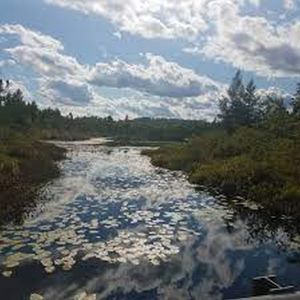
pond in Hibberts Gore
I’m not sure what other states might have come up with for these surveying errors, but the possibilities I imagine are fun. New Hampshire might call them ‘Not taken for granite’, California calls them ‘Whoopsies’, New Jersey refers to them as ‘Who cares, the mob buried so many bodies, nobody wants to own it’, North Carolina refers to them as ‘If it don’t grow tobacco, who gives a damn, and Florida refers to them as ‘Build a trailer park and the snowbirds will flock to it.’ Texas has the following in place of gores ‘We’re so damn big, who cares.’
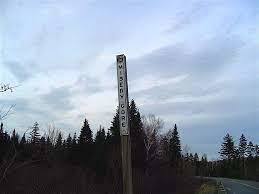
Vermont has four while Maine has a bunch and one sits not far from where I grew up in Union. Here’s the list with suggested mystery novels written about them.
Hibberts Gore, Lincoln County pop. 1 Area 2.0 Mi. Haunted by the Hibberts
Blake Gore Somerset County Pop 0 Area The Vanishing Portrait of William Blake
Coburn Gore Franklin County Pop 0 Area Looking for Abner’s Ghost
Gorham Gore Franklin County Pop 0 area If You Can’t Stab ‘Em Gorham
Massachusetts Gore Franklin County Pop 0 area 37.3 The Place Where Flatlanders Come to Die
Misery Gore Somerset County Pop 0 area Misery Loves Company
Moxie Gore Somerset County Pop. 0 area Just Plain Flat in Moxie
Veazie Gore Penobscot County Pop. 0 area Easy-Peasy Murder in Veazie
As you can see, most are near the Canadian border and unpopulated, so they’re great places to hide bodies, or run smuggling operations. I can attest to great scenery and decent fishing in them as well.
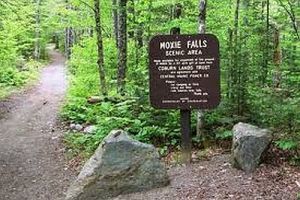
Here’s a link to an article about them from the Bangor Daily News:
https://bangordailynews.com/2015/08/23/news/state/who-lives-in-misery-gore/
March 26, 2021
Weekend Update: March 27-28, 2021
 Next week at Maine Crime Writers there will be posts by John Clark (Monday), special guest Detective Jason Allison (Tuesday), Kaitlyn Dunnett/Kathy Lynn Emerson (Thursday) and Kate Flora (Friday).
Next week at Maine Crime Writers there will be posts by John Clark (Monday), special guest Detective Jason Allison (Tuesday), Kaitlyn Dunnett/Kathy Lynn Emerson (Thursday) and Kate Flora (Friday).
In the news department, here’s what’s happening with some of us who blog regularly at Maine Crime Writers:
Susan Vaughan: Happy Spring, all. In celebration of warmer weather, I have a hot sale on the Kindle version of Dark Memories. The book is only 99 cents March 26-30. Here’s a short description of the book: After witnessing a murder, Laura hides under an alias at a Maine lake resort where she feels safe. Until bad-boy Cole walks back into her life. Now a Fed, he has come to protect her and flush out a killer. Together 24/7, they can’t deny the passion between them. As dark memories assail them and a killer closes in, they must learn to trust each other—before their future is extinguished forever. http://getBook.at/DarkMemories
Kaitlyn Dunnett/Kathy Lynn Emerson: For all those who have followed the story of Lea Wait’s cat, Shadow, yesterday was her seventh birthday. She’s doing great. Here’s a photo taken a few weeks ago when she appropriated the blankets I temporarily tossed onto the floor while changing the sheets on our bed.
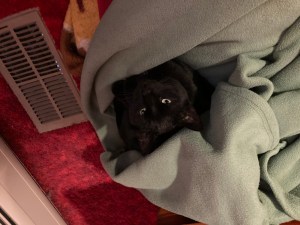
What can I say? It was a chilly morning!
An invitation to readers of this blog: Do you have news relating to Maine, Crime, or Writing? We’d love to hear from you. Just comment below to share.
And a reminder: If your library, school, or organization is looking for a speaker, we are often available to talk about the writing process, research, where we get our ideas, and other mysteries of the business. We also do programs on Zoom. Contact Kate Flora
Easy fast and no-brainer top writing tips for all writers
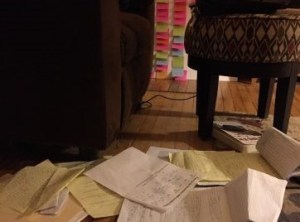
Writing isn’t always easy and neat. That’s what makes it so fun!
Got you with that title, didn’t I? Seriously, though, it’s a reality that all writers — beginners and veterans — want tips. We write about them on this blog freqently. Just in the past few days, I’ve been asked for some by a variety of people. Yes, that’s right. Me.
Writers can debate, and do all the time, what “good” and “bad” tips are. We could write thousands of blogs of writing advice and still not cover it all.
That said, here are some quick tips that I think most writers would agree are universal. They’re probably things you’ve heard before, but that’s because they work.
The book won’t write itself. That’s right — no matter how many tips, tricks, hacks or whatever, you have to just sit down and write it. If you don’t believe me, read Stephen King’s “On Writing.”Write what you “know,” but more importantly, know what you write. There’s nothing wrong with branching out, otherwise we’d all be writing about writers sitting in a room thinking about writing. But make the effort to gain deep knowledge that’ll enhance your book. Visit the sites, talk to people (or at least eavesdrop on conversations), move past what “everyone” knows to the things only a few do. Research has never been easier with the worldwide web. But visit the newspaper archives at the Maine State Library or newspaper.com, out-of-the-way historical societies, read books about your topics — the possibilities are endless. Nuances and insight will enrich any story.Read. The more you read, the more variety you read, the more your world and imagination expand. Read everything you can get your hands on and never stop.Read bad books. Good books are great, but most readers tend to get lost in the story because, duh, the book is good. I’ve learned more about the basics of writing from reading bad books and seeing what could’ve done better than I ever have reading good ones.Know the basics. You don’t have to go get an MFA in creative writing or even drop a ton of dough on writing courses, but put that Strunk & White that you have somewhere around the house to use. More importantly, go online and find information about writing basics and brush up. I was a judge for years in the Writers Digest self-published contest, and can say with certainty that many writers just don’t know the basics. I’m talking about things like clauses that don’t match subjects, a universally chronic issue; misuse of prepositions; innacurate or inconsistent tense; you name it. No one is going to be a perfect writer, but the better you know the basics, the better you’ll be at telling your story. Know the bigger stuff. Writers who understand things like point of view shifts, when to use exposition and when not to, how to weave in background, and more will have better books than those who don’t. When I was a freelance editor, I’d sometimes get pushback from writers saying, “But [insert famous writer’s name here] doesn’t [insert writing basic here].” That’s fine for them, but for the rest of us, knowing that stuff and doing it correctly will only help.Know your voice. Don’t be afraid to be yourself when you write. There may be people — your writer group, an editor, your spouse — who want you to water it down and be more generic. If you know the craft and understand what your voice is and why you’re doing what you’re doing, let it fly. Yes, I know I said I learn more from bad books than good ones, but one big thing you can learn from good books is how good writers find a way to let their voice shine through. Two of my favorites are Elinor Lipman and Carl Hiaasen, two very different types of writers who have unique voices and write beautifully.Don’t be afraid of your imagination. Similar to voice, let your imagination go where it will. Again, if you know the craft well enough, you can make it work. Don’t be afraid of it. But also understand what’s important and what isn’t to make the story work.Have a structure in mind. If you are at all involved with writing, you’ve heard the whole “pantser” and “planner” thing. You know there isn’t one “right” way to go about it. That said, at some point, you have to figure out where the book is going, what works, what doesn’t, and give it some structure. I usually start my books with a vague idea of where it’s going and I usually have an ending of sorts, and then I see where the writing takes me. That means I’m constantly outlining, beginning when I get to about the 100-page mark, to stay on track. Then I go back, adjust things, move things, re-outline, etc. until it’s finished. I know that sounds exhausting, but I actually enjoy it. You don’t have to do it my way, but just be sure you at some point start figuring out where you’re going, what’s working, what is extraneous and how it’s all going to tie together.Pay for a good professional editor. This is a must for those hoping to get an agent or publisher, or to hit it big with their indie book. It’s also useful for someone with a publishing contract so they can send a nice tight manuscript to the publisher. I no longer do freelance book editing, so this isn’t a plug for my services. But I’ve read hundreds, yes hundreds, of indie books for the Writer’s Digest contest and the No. 1 issue is that almost every single book is not well-edited. Almost every single one. While everyone seems to know someone who’s awesome at finding typos, and that’s a good person to know, that’s not what editing is. When I finish my first draft, I have four to five readers; then, once I’ve done revisions, I have one or two who check for typos, spelling etc. Then I get the book edited. So, for those who have someone who does that for them, that’s great. Once that’s done, send it to a professional editor. Good book editing means not only knowing the things in No. 5, but also the things in No. 6. And, no matter how much you think that friend or spouse, or whoever, will be “honest” with you, someone who is a professional and paid to do it actually WILL be honest.It’s important to ask around and do some research. Ask other authors, check out books the editors have said they’ve edited. You can find freelance editors at a number of places online, including the Maine Writers & Publishers Association and the Editorial Freelance Association website. I would strongly recommend NOT going through an online editing service (a blog post for another day), but rather find someone through word of mouth or professional references. Reach out to people whose books you like that are well-edited, organizations that help writers and other reliable sources.
An editor can be good and still may not be right for you. You want someone who understands you and your book. That’s why it’s important for YOU to understand your book, and why the first nine tips are important.
If you think editing costs a lot of money, you’re right. It’s one of the most undervalued professions out there, because everyone knows someone who’ll do it for free. Scrape your dough together, though, and find someone who’ll actually do well.
A final bonus tip: While it’s hard work, you should also get some joy out of writing. If you don’t get any joy out of it, assess what your goal is and why you’re doing it.
I know I’m kind of a broken record on this, if you’ve been reading my blog posts over the years, but if writing sounds like a lot of hard work, it’s because it is. As a book editor and judge in the Writer’s Digest contest, I’ve found it’s easy to see who’s willing to do the work and who isn’t. One of my favorite quotes is from Thomas Edison, who said, “Opportunity is missed by most people because it’s dressed in overalls and looks like hard work.”
March 24, 2021
Spring Forward, Looking Back
Whole lotta lessons lurking in the past year, not the least of which is an introvert can really miss the company of people. I’m not going to dwell on the losses, which are many and multifarious, but there have been some bright spots, too. I hope you’ve found some as well.
First—got a lot of work done. Usually, I’m good for about a novel a year. This strange year, I’ve written two, both almost done. So my capacity has stretched. Whether it will snap back like a broken bungee once I can go out to eat, meet with friends, and generally resume a simulacrum of normal life is another story. But beware—I’m going to hug a lot of you people so hard. . .
More than the work, though, I got more time to think more deeply about what I’m doing with this fictioneering, and why. Crime writers I know will tell you they want nothing more than to tell a good story, but I’ve come to realize that we are all working in service to something bigger.
We wouldn’t expend all this energy if something else wasn’t behind the storytelling urge—a desire to create order, a passion for various kinds of justice, a desire to inform. Something more than the attempt to transfix you.
As one of our blog readers, you know Maine writers. You know we describe the unglamorous parts of Maine, the poverty and the harshness, the political and environmental issues that challenge our land and water. You know we write about the perils of policing, the human costs on both sides of that equation. We write about the immigrant experience, immigrants from other states of the Union and immigrants from other countries. We write about the comforts and constrictions of small town living.
the political and environmental issues that challenge our land and water. You know we write about the perils of policing, the human costs on both sides of that equation. We write about the immigrant experience, immigrants from other states of the Union and immigrants from other countries. We write about the comforts and constrictions of small town living.
If there was anything for me in realizing all this, it was that I have a reason for the stories I’m telling, too. Maybe a different one for every book, but I’ve given up the notion that I’m writing only entertainment. I realize that, no matter how much I try to concentrate on plot and character, my concerns and ideas will come through. May sound a little obvious for some folks, but I’ve never been the speediest pen in the East. 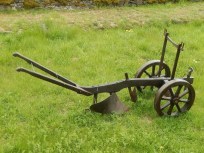 At our premarital counselling session in 1983, the minister characterized me as someone who “plowed a slow straight furrow.”
At our premarital counselling session in 1983, the minister characterized me as someone who “plowed a slow straight furrow.”
And the other thing I learned—relearned, really, in the maelstrom of outside world in 2020—is that this is still hard. I’ll mangle the quote, but George Saunders says something to the effect that every time you write a novel, it’s like going in to fix a plumbing problem, but the tools all look different from the last time you worked and the arrangement of pipes and toilets and faucets is a different mess of problems than the last job you worked on.
I think about writing novels as building fine furniture, with the understanding that, before you get to rabbet and dado, you have to grow the tree. From a seed. Tend the ground, mill the lumber, knowing no amount of craft can straighten the grain of a stunted or twisted tree. Even then, you only work with that you have.
So that doesn’t seem like a lot to have learned from a year and change, marinating in my own mental juices, but I know how fortunate I am. I didn’t have to raise a child, teach a classroom, or support anyone other than the usual suspects. As we emerge from this mess, I hope we can keep what we’ve learned in the fore, discard the unpleasant bits of the history, and walk into the light. And I’m still going to hug all you people so hard . . . .
March 23, 2021
DANGEROUS DOUBTERS
Charlene D’Avanzo: As crime writers, we populate our stories with all manner of bad, dangerous people—liars, cheats, swindlers, and of course murderers. My own books include guys who’ve tried to drown my protagonist Mara, slam into her kayak with a motorboat, kidnap her at gunpoint, and leave her to die on an isolated island fifty miles off British Columbia.
While I’m still working on book number five, working title “The Shark, The Girl, & The Sea”, given the elasmobranch fish in the title readers can guess the nature of the danger Mara faces in this story.
However, recent politics have forced me to acknowledge a powerful threat more dangerous than sharks and a lot more challenging to confront.
It’s a danger I’d never considered mainstream—the growing number of people who say they don’t “believe” in science and go on to question the reality of the pernicious virus we deal with daily.

“IN SCIENCE WE TRUST”
As an ecologist the science statement leaves me gob smacked. And as someone who has lost a family member to Covid-19 virus denial makes me livid.
The well-known Stanford psychologist Leon Festinger tells us that “a man with a conviction is a hard man to change. Tell him you disagree and he turns away. Show him facts or figures and he questions your sources. Appeal to logic and he fails to see your point.”
 Today that person is very dangerous indeed. I’ll adapt the title of Gabriel Garcia Marquez’s famous book and call our time “Death In The Time Of Disbelief”. The denial manifests itself in many ways, whether that be refusing to wear a mask or insistence on attending large gatherings.
Today that person is very dangerous indeed. I’ll adapt the title of Gabriel Garcia Marquez’s famous book and call our time “Death In The Time Of Disbelief”. The denial manifests itself in many ways, whether that be refusing to wear a mask or insistence on attending large gatherings.
Mainers know first-hand what happens when people scoff at such rules. Recall, for example, The Katahdin wedding in early August which by the end of September had led to eight deaths and at least 177 cases of COVID-19.
More famous examples may help change peoples’ minds. A few days ago, Tanzanian President John Magufuli—who has not been seen for three weeks and was widely rumored to be sick with a virus he downplayed for months—has now died. This “leader” scoffed at mask-wearing, criticized regional neighbors for imposing lockdowns, and rejected coronavirus vaccines. Well, now he leads no more.
March 22, 2021
Mud Month. Big Night! (Not What You Think…)
Sandra Neily here: It’s mud month in much of the northeast.  I’m washing off my snowshoes and waxing my X-skies to rest them for a while. What to DO when it finally does melt off the high-up slopes?
I’m washing off my snowshoes and waxing my X-skies to rest them for a while. What to DO when it finally does melt off the high-up slopes?

If you look hard, you’ll see Moosehead Lake puddling up out there. Black dots: Raven my dog and granddaughter too tired to walk back.
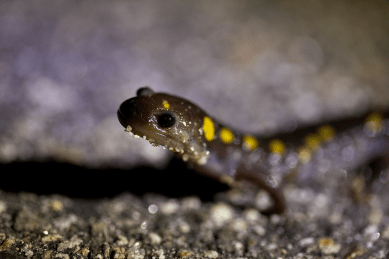
Distancing is still with us! Here’s something very cool to do. (And then find Maine’s mud anthem, “I Love Mud,” at the end of this post. Sing along with Rick.)
Big Night!
Roads, Rain, and Amphibians. Big Nights are fascinating and unique natural events that occur every spring. With spring rain and warming temperatures, frogs and salamanders move to their breeding grounds by the truckload. However, these miniature migrations often put them in harm’s way on roads. How we can assist and protect these ancient populations will be the subject of this presentation (April 6, from 4-5, offered from Maine Audubon.) Sign up to join in for this presentation so you can get ready for Big Night.
This is solid citizen science. Here’s more from the Amphibian Migration Monitoring (MBN)! MBN is a community science project where anyone can participate in collecting important data on migrating frogs and salamanders while directly influencing their conservation outlook. The project occurs every April and has over 300 locations statewide.
 Owl courtship and home building is heating up. Here’s Maine Birding Trail founder Bob Duchesne laughing at himself but calling them in, just a few days ago. And a guide to various owl sounds so you can try, too.
Owl courtship and home building is heating up. Here’s Maine Birding Trail founder Bob Duchesne laughing at himself but calling them in, just a few days ago. And a guide to various owl sounds so you can try, too.
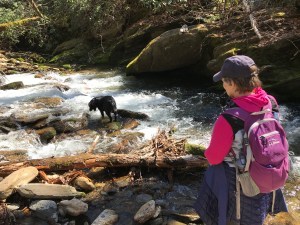
We’ll be back to camp on Curtis Creek, NC.
And my news: I’m moving a scaled down version of my desk into a box that travels with my husband and me to North Carolina for a few weeks as we take our small camper into National Forests and the Great Smoky Mountains National Park.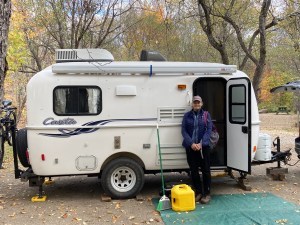 (In between forest campsites there’s great ribs and good laundry opportunities in Asheville where my sister lives.)
(In between forest campsites there’s great ribs and good laundry opportunities in Asheville where my sister lives.)
My third novel, “The Deadly Line,” is unfolding, even if I have to write longhand pages on picnic tables.
My second interview with Bryan Wentzell’s series “A Walk In the Woods,” is up on line now as well as his earlier interviews with an Steve Tatko, a Maine forester who has decades of deep woods experience and lore to share. Bryan likes to interview folks in the field. We snowshoed in subzero weather while he quizzed me about my river guide and conservation work, and outdoor family anecdotes. Steve’s interview happens in a truck on remote back roads.
MUD ANTHEM! Please, learn the words to this song if you don’t already know it by heart from your child’s years or your young years. You can sing along with Rick, here. (Warning, the chorus sticks in one’s head for constant replay.)
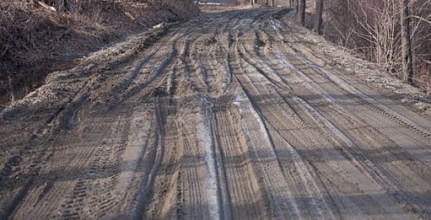
I Love Mud
Mud, mud, I love mud!
I’m absolutely, positively wild about mud.
I can’t go around it. I’ve got to go through it.
Beautiful, fabulous, super duper mud.
Big Teddy White, his clothes were mighty clean.
Went swimming in a pool of mud, he made quite a scene.
He started with the backstroke, followed by the crawl.
You should have seen him swimming when he heard his father call.
Mud, mud, I love mud!
I’m absolutely, positively wild about mud.
I can’t go around it. I’ve got to go through it.
Beautiful, fabulous, super duper mud.
Julianna Root had shiny yellow boots.
Saw a pool of mud that she wanted to go through.
She only took two steps and then she disappeared.
Nobody’s seen her for twenty-five years. Mud, mud, I love mud!
I’m absolutely, positively wild about mud.
I can’t go around it. I’ve got to go through it.
Beautiful, fabulous, super duper mud.
Little Rusty Night, he was only three.
Was working in the mud on his favorite recipe.
With sticks and bugs and sour milk, it looked like brown ice cream.
When he started tasting it, he heard his mother scream. Mud, mud, I love mud!
I’m absolutely, positively wild about mud.
I can’t go around it. I’ve got to go through it.
Beautiful, fabulous, super duper mud.
Now I would be the last to tell you what to do.
And when it comes to mud you know it’s really up to you.
So if you can’t decide and you’re sitting on the fence,
The most important thing to do is use your common sense. Mud, mud, I love mud!
I’m absolutely, positively wild about mud.
I can’t go around it. I’ve got to go through it.
Beautiful, fabulous, super duper mud.
Sandy’s novel “Deadly Trespass, A Mystery in Maine,” was a finalist in the Maine Literary Awards, a recipient of a Mystery Writers of America national award and a national finalist in the Women’s Fiction Writers Association “Rising Star” contest.. Her second Mystery in Maine novel, “Deadly Turn” is now in Sherman’s Books and on Amazon in Kindle and paperback. She lives in the Maine woods and says she’d rather be “fly fishing, skiing remote trails, paddling near loons, or just generally out there.” Find more info on her website .
March 19, 2021
Weekend Update, March 20-21, 2021
 Next week at Maine Crime Writers there will be posts by Sandra Neily (Monday) Charlene D’Avanzo (Tuesday), Dick Cass (Thursday) and Maureen Milliken (Friday).
Next week at Maine Crime Writers there will be posts by Sandra Neily (Monday) Charlene D’Avanzo (Tuesday), Dick Cass (Thursday) and Maureen Milliken (Friday).
In the news department, here’s what’s happening with some of us who blog regularly at Maine Crime Writers:
An invitation to readers of this blog: Do you have news relating to Maine, Crime, or Writing? We’d love to hear from you. Just comment below to share.
And a reminder: If your library, school, or organization is looking for a speaker, we are often available to talk about the writing process, research, where we get our ideas, and other mysteries of the business. We also do programs on Zoom. Contact Kate Flora
March 18, 2021
What’s Ahead for Maine Crime Writers?
Today we’re sharing news of upcoming publications and works in progress so you can keep up with the writers and characters you love.
Kate Flora: It’s kind of a mystery to me, since the fate of my stories lies in the hands of my publisher, but according to Amazon, the next installment in my Joe Burgess police procedural series, Book 7, A World of Deceit, will be available on April 20th. In this book, after the horrific events in A Child Shall Lead Them, Burgess takes his family on vacation, trying to get away from police work. The world won’t let him, though. As he snoozes in a hammock, a small girl appears, asking for his help. They’re renting the cottage next door, and she can’t wake her father up.
Susan Vaughan: I’m coming close to the end of the first draft of my current project. Tentatively titled “Genuine Fake,” this is an addition to my Devlin Security Force series. DSF’s mission is to protect and retrieve art and artifacts. Gemma Bellini is the executive director of her grandfather’s estate. He was a famous painter (think Andrew Wyeth). When she calls on DSF operative Boyd Kirby to help find an artist friend, he uncovers a larger plot involving murder and forged Bellini paintings. Past experiences have led Gemma to find it hard to trust men, and Boyd not to trust himself to keep anyone safe, especially her. The research for this book has been challenging, fascinating, and fun—art forgery and authentication, the work of FBI Art Crime, art gallery openings, and more.
John Clark: A novella Don’t Say It which was intended to be the final piece in my short story anthology Hardscrabble Kids, has decided to be a longer piece, maybe even a book. In its place I shanghaied one of the six characters I wrote about in an earlier blog, Subah Rioux and am halfway through her entry which is called Lie Down With Dogs.
Kaitlyn Dunnett/Kathy Lynn Emerson: I’m still working on that collection of essays I wrote about here, and also on a print-on-demand edition of a YA novel, Someday, that has been available as an e-book for awhile now. The story takes place in Maine in 1992 and has mystery and romance as well as being a coming-of-age story. Here’s a look at the updated cover.
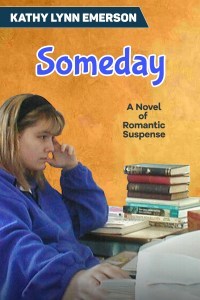
I have no idea if anyone will want to buy it, but the idea with all the self-publishing I’ve been doing this past year is to get the stories out there and find out. So far, in addition to these two projects, I’ve created POD and/or e-book versions of two works of non-fiction for grownups, one biography for young readers, and five novels aimed at ages 8-12. Someday was written for ages twelve and up, but given how fast kids grow up these days, some younger readers might enjoy it too.
Sandra Neily: I’ve started work on the third novel in my “Mystery in Maine,” series. I’m calling it “The Deadly Line” … for now. I’m deep into some lynx research as they’ll either show up or be hard to find. Or both. 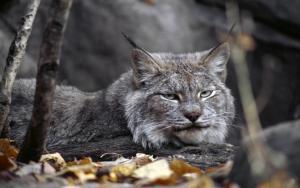 Again, narrator Patton finds herself again in hot water, called upon to be an outlaw in service to a world she loves but not before she lands in very cold water. Literally. Here’s first lines.
Again, narrator Patton finds herself again in hot water, called upon to be an outlaw in service to a world she loves but not before she lands in very cold water. Literally. Here’s first lines.
*******
Up to my waist in broken ice, snowshoes scrambling for good footing in the melting marsh and lake bottom muck, I struggled for breath. Even though the water was chest high, I couldn’t seem to get air with my seized-up lungs. Ice-water saturated my clothing and found skin.
I saw Pock sinking into a happy crouch. My dog was a Lab. Water—any water— was heaven-sent. “Nooooooo,” I yelled. “Don’t jump! Not fun in here. Not FUN!”
*********
And I’ve started taking notes on a non-fiction something I call right now, “When Do Deer Grow Moose Antlers and Do We End Up Where We Started.” Bits of guest insanity and anecdotes both fun and dramatic from my river guiding days. 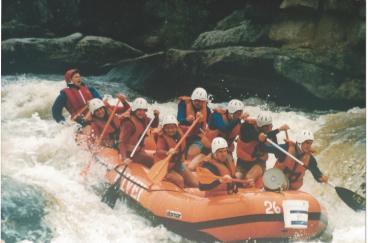
March 15, 2021
Real Life isn’t at all Cozy
Kathy Lynn Emerson/Kaitlyn Dunnett here. Readers will have to forgive me if this post isn’t as coherent as most. I’m still processing events that took place about a week ago. A lot of what’s going through my mind isn’t stuff I want to dwell on, but I don’t seem to have a choice. For others in my family, shifting their focus to something else is a lot harder.
In the wee hours of the morning on Monday, March 8, an intruder broke into the house where my brother-in-law, niece, and great-niece live. He was armed with at least one gun, a taser, restraints, and an appalling number of pipe bombs. No one knows what his original intention was. Nearly twenty hours into a standoff with police, he killed himself. By that time, the only hostage still in the house was my brother-in-law (my husband’s late sister’s widower). My niece ran for help the moment she recognized the intruder. My great niece, hours later, managed to climb out a second-story window and jump off the porch roof. She and her grandfather suffered minor injuries, but they’re alive, which is all that mattered to family members and friends anxiously waiting for news.
I’m not going to give more details, other than to say I also knew the hostage-taker. For five or six years, until about three years ago, he was treated as part of the family he took hostage. I knew him from holiday gatherings, which for the last ten years or so have taken place at the house he broke into. Back then, I didn’t have strong feelings about him one way or the other, but I never imagined he’d end up harming people I love.
Anyone who wants to can Google “Livermore Falls, Maine hostage situation” and find (more or less) accurate accounts of what happened. What I’m compelled to write about, since I have a post due today at a writers’ blog, is the disconnect between the horribleness of this real crime, which could so easily have included at least one murder along with the suicide, and the mystery fiction we read (and write) as entertainment. In the past, I’ve tended to ignore crime reports on the evening news, preferring the calmer, pleasanter world of my imagination. I can’t do that anymore.
In a traditional mystery novel, the good guys win in the end and the villain gets his or her just desserts. Both readers and writers find that formula reassuring. There is even an argument, one I’ve made more than once, that justifies putting characters in mortal peril for the sole purpose of letting them find some clever way to turn the tables on the villain, usually after said villain has had the opportunity for the “obligatory spilling of the beans.” In the cozy mysteries I write, these scenes have sometimes had elements of humor.
I don’t find them so amusing right now. It’s probably a good thing I’m not currently under contract to produce more of them, because I can’t help but feel that those of us who write cozy mysteries have been doing a disservice to the victims of real-life crimes. It’s not that we’ve made light of their experiences. The humor, at least in my mysteries, comes from eccentric characters and human foibles not directly connected to the crimes. But the inadvertent result may well be that real-life crimes, at least those that don’t involve people we know, have less impact. They don’t affect us on an emotional level any more than reading a gripping scene in a novel does.
But here’s the difference—in real life, no one gets a chance to revise the story. The outcome doesn’t change, nor do the events leading up to it.

Kathy Lynn Emerson/Kaitlyn Dunnett has had sixty-three books traditionally published and has self published several children’s books and two works of nonfiction. She won the Agatha Award and was an Anthony and Macavity finalist for best mystery nonfiction of 2008 for How to Write Killer Historical Mysteries and was an Agatha Award finalist in 2015 in the best mystery short story category. She was the Malice Domestic Guest of Honor in 2014. Her next publication (as Kaitlyn) is the fourth book in the contemporary “Deadly Edits” series (Murder, She Edited), in stores in August 2021. As Kathy, her most recent book is a standalone historical mystery, The Finder of Lost Things. She maintains websites at www.KaitlynDunnett.com and www.KathyLynnEmerson.com. A third, at A Who’s Who of Tudor Women, is the gateway to over 2300 mini-biographies of sixteenth-century Englishwomen, now available in e-book format.
Lea Wait's Blog
- Lea Wait's profile
- 506 followers


